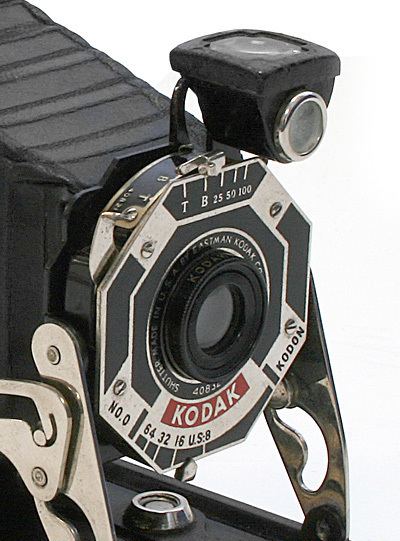 | ||
Bulb, abbreviated B, is a shutter speed setting on an adjustable camera that allows long exposure times under the direct control of the photographer. With this setting, the shutter simply stays open as long as the shutter button remains depressed. An alternative setting common on film cameras is Time, abbreviated T, where the button is pressed once to open the shutter and again to close it.
Contents
History
The term bulb is a reference to old-style pneumatically actuated shutters; squeezing an air bulb would open the shutter, and releasing the bulb would close it. According to the Focal Encyclopedia of Photography:
BULB EXPOSURE (B). Another term for a brief exposure—in which the shutter remains open only so long as the shutter release is held down. The word originated with the early pneumatic shutter release.
It is not clear when the term actually originated. The first industrial produced leaf shutters from Voigtländer in Germany in 1890 had two settings: "M" for Moment exposure and "Z" for Zeit (English: time) exposure. The M-setting enabled the adjustable fractions of a second.
With the Z-setting the shutter opened when pressed and closed when it was triggered again. Around 1894 the third setting "B" for Beliebig (meaning beliebige Zeit, English: any time) was added for the shutter of C. A. Steinheil & Söhne in Munich. The B-setting enabled his shutter to stay opened as long as the release was pressed. Bausch & Lomb in Rochester overtook these settings for their popular Unicum shutters in 1898. With the worldwide success of the shutters of Wollensak like the Junior since 1903, most of the other shutter manufacturers in the world overtook the (now international) settings T for time, I for instantaneous. The B setting was kept until today for the familiar bulb behavior that could be achieved by a cable release in the English-speaking world and for Beliebig in Germany.
Use
The bulb setting is used on some cameras, including some point-and-shoot cameras, to obtain shutter speeds slower than the minimum offered by the camera otherwise.
Because of the risk of camera movement, the camera is most often mounted on a tripod for the duration of the exposure. While it's generally possible to use the shutter release button on the camera itself, a cable release or electronic remote is often used to further eliminate the risk of shaking the camera during the long exposure. The cable releases generally include a locking feature to eliminate the need to keep the button or plunger depressed during extremely long exposures.
The bulb setting is useful for the following types of photographic subjects:
On modern cameras
On some modern cameras, bulb is a mode available as an option on the LCD menu only, if possible at all. On others, including many Digital SLR cameras, bulb is typically available from the manual exposure mode and—rarely—also from shutter priority mode.
When set to bulb, generally on the "M" or manual setting of the camera, the shutter will stay open as long as the shutter release button (or shutter release cable or remote) remains depressed.
Some mid-level or bridge cameras such as the Olympus SP-560UZ have a 'limited' bulb setting, allowing time exposures up to 8 minutes and at an ISO setting of 200 ISO and lower.
In 2012, Olympus introduced a new form of bulb mode with their "Live Bulb" (without toggle) and "Live Time" (with toggle) settings in their Olympus OM-D E-M5 digital camera, where the viewfinder and display gets updated during the exposure in order to allow the photographer to inspect the exposure while it "develops". The display refresh rate for this mode can be configured between 0.5 s and 60 s.
Some specialized cameras use other image triggers.
